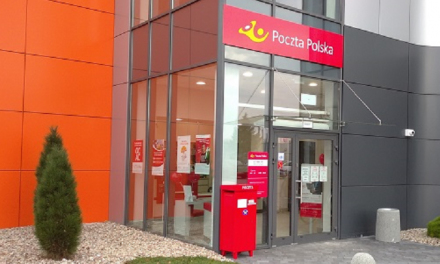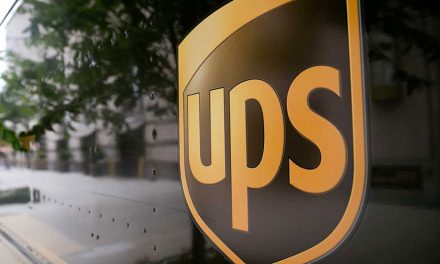
UPS looks to the future with major Asia investments
In an interview with Payload Asia, UPS Asia Pacific president Derek Woodward noted the company had ridden out serious global calamities before and would again this time. In an interview with Payload Asia, UPS Asia Pacific president Derek Woodward noted the company had ridden out serious global calamities before and would again this time.
"We've been in this business for 101 years and we've weathered depressions, wars and everything else, so we think we're in good shape and when things rebound back we want to be in a position to take advantage of as many of the opportunities as possible," he said.
But this time is clearly different, not just for UPS, but the entire global economy. UPS' recent full-year results pretty much tell the story. While reporting a full-year 2008 net profit of $3bn, the figure was more than halved from a year earlier, where UPS posted a net profit of $6.55m (before a one-time $6.1bn pension payment is taken into account).
But as difficult as 2008 was, UPS' business in the Asia Pacific region still performed well.
"We were so pleased with our results for 4th quarter 2008," says Woodward. Export volume out of India grew at 25% and China still turned in a healthy 10% growth for UPS, while over-all the region grew at 5%.
"So from a growth perspective we are still satisfied with that, obviously it's been a difficult year on the express side, with growth especially into the US has been declining," he added.
According to UPS figures, its total US package volume declined 4.4% with ground volume down 3.7% and its next day domestic air service declining a full 10%.
Network rationalisation
One of the key aspects that helped stabilise the express side of the business was a concerted effort to rationalise its global network, particularly in the US, where a number of older DC-8 aircraft were retired.
"We put a lot of effort into this because a key part of our expense is our air network." In the US the air network represents a much larger share of the instance, where there is a much greater domestic business than long haul air.
As UPS saw business slowing, particularly into the US, "we took the opportunity to go back and rationalise our network a bit more to keep our utilisation factors up," says Woodward.
This had the intended effect, as he says UPS saw a bit of a dip in December/ January timeframe, "but with some of the network changes we made we're pretty well back to where we were last year in terms of our utilisation factors and I'm pleased with that."
"One of the things we feel is a competitive advantage for us is the flexibility in our network, we're an integrator, but we're also a forwarder," he says.
This combination allows UPS to either move volumes back onto its brown tail network, or in some cases removing a brown tail and going on common carriage.
This depends on the market segment and trade lane, but overall Woodward is happy with the outcome saying utilisation factors are back up to what he considers acceptable.
Meanwhile, on the forwarding side one of the key dynamics has been decline in top line growth.
"But I think we've done a great job on our purchase transportation expense, where we're going out and securing space – either block space or through agreements that we have.
"We've done a nice job on our purchase transport to make sure we're working with our customers to procure space and still have respectable margins."
Guarded optimism
But amidst the doom and gloom, there are pockets of optimism to be found. Citing UPS research from the group's Asia Business Monitor, Woodward notes that nearly 71 per cent of business leaders surveyed from small and medium enterprises (SMEs) are bullish on intra- Asia trade, compared with Asia-US.
"We still see opportunity for the small and medium sized customers especially on the intra-Asia and to a some what lesser extent on the Asia-Europe trade, so that's still a good growth opportunity for us," he said.
And while the numbers coming out of China are no where near where they were a year ago, there is still a 7-8% growth rate for the express market primarily, respectable by pretty much any measure.
Key trends
A key trend which UPS, and indeed its competitors, have witnessed, is that of customers switching from premium to non-premium service offerings, both on the express and forwarding side.
"We're seeing a big shift in express where it would be a 10.30 or noon commit, to a slower express option which is end of day, or expedited which could be express plus two, which could be a couple of days slower than express," he says.
Another key trend is the shift from air to ocean. "We're seeing a lot more down-trading from air to ocean and again depending on the commodity and its shelf life, but we see that as a trend that will continue for now."
There is another key set of dynamics going on as a result of the downturn, according to Woodward. "I deal with a lot of customers in quite a range of verticals and I think the more forward looking companies right now are looking at revamping supply chain efficiency, through a lot of different means."
The proactive ones, he says, are getting ready for when the economy rebounds and "I think when that happens these companies are going to have the first mover advantage when things get back to normal," whenever that happens, he adds.
But, it is largely a tale of two situations. "Some companies in serious trouble right now and are really going after cost in a big way, whereas others, just through prudent business practices are looking for all the opportunities they can, but they're also not losing sight of the fact that one day this is all going to come back so they want to be well position for when the growth returns."
Investing for the future
And UPS is clearly one of the forward looking companies that sees the current downturn as part of the cyclical nature of doing business in the global economy.
With a strong cash balance of $5.7bn, the group will continue to make investments and acquisitions where it sees potential.
Woodward does acknowledge that investments this year will be somewhat more measured, not simply because of the current downturn, but because particularly for UPS Asia-Pacific, last year was a big ticket year with major investments in China and also significant ones in Korea.
UPS undertook a significant brand building exercise, as both sponsor and official logistics provider at the 2008 Beijing Summer Olympics. It also expanded its footprint in China by expanding to 10 additional cities across the country last year. But clearly the biggest news in the last year for UPS has been the opening, in December, of its major international hub located in Shanghai Pudong International Airport and the ground breaking for Itsintra-Asia hub in Shenzhen.
Shanghai international hub
A key gateway linking China to UPS' global network, the new $150m hub features the largest on-site 24/7 customs inspection area – which includes a customs risk management system – in Shanghai and was built to a unique design that facilitates rapid handling of express packages in addition to heavy freight.
"It's a unique facility for us, we've put some state-of-the-art technology in there, along with customs and right now we're implementing paperless invoices which is an industry first," Woodward says.
"But it's a little different than some of our other facilities because we process freight and express through one facility which is a first for us, but having that capability gives us extra synergies," he said.
The hub features 117 conveyor belts and 47 docking bays and has a package sorting capacity of 17,000 pieces per hour. It also is designed for simultaneous rapid processing of heavy freight, recognising the different types of business done by importers and exporters in China.
With its high sorting capacity, the hub improves delivery times for customers in eastern China by a full day. In addition, pick-up times for express and cargo shipments in Shanghai will be pushed back by one hour and four hours, respectively, so customers have greater flexibility in shipment preparations, according to UPS.
Another industry-first feature is the "Shipper Build Area" at the General Cargo Handling Area, which allows customers to perform on-site packaging before goods are loaded onto the aircraft. This eliminates the current industry practice of processing goods at a separate facility.
"China is UPS' top international priority," said Richard Loi, the head of UPS China. "We have continued a steady path of expansion here and this latest facility stands as a strong testament to our long term commitment."
Shenzhen intra-Asia hub
A second key investment in China took root in October with the ground breaking for UPS' new Shenzhen Intra- Asia Hub. The new hub represents a $180m investment and is targeted to open in early 2010, pending government approvals.
"The hub is a strong testament of UPS' commitment to support our customers' growth in the intra-Asia region," said Woodward who added that the Shenzhen hub will better position UPS to serve its customers within China and the region. By positioning the intra-Asia hub in Shenzhen, UPS will reduce its shipment transit times across Asia by at least one business day, it said.
The Shenzhen Intra-Asia hub will be built on a land area of 89,000 square metres and include a dedicated 150,000 square-metre ramp provided by Shenzhen Airport for ramp handling operations, an express customs handling unit, sorting facilities and cargo handling and cargo build-up areas.
The sorting capacity is projected to reach 18,000 pieces per hour with the flexibility to expand to 36,000 pieces per hour at the 24/7 facility.
Korean focus
UPS was also actively investing in Korea over the last year, foremost in what the company calls, "browning up". "We browned up by acquiring our joint venture there and making it wholly owned," says Woodward.
"We felt the time was right so now we have an alliance structure there with our express and forwarding businesses combined." Two new offices in two new cities were opened recently and two more will be opened within the next month.
Although some have painted Korea as a fading manufacturing giant with the rise of China, Vietnam and India, UPS still sees substantial opportunity there.
"We still think there's going to be opportunities on both the express and forwarding side and plan to continue expanding our footprint for import and export," he said. Domestic delivery services are not in the cards at present, he added.
Growing India
In India UPS has a joint venture with the country's largest private carrier, Jet Airways and last year UPS struck a strategic sales alliance with India's largest domestic logistics company, AFL.
"The AFL deal significantly broadened our footprint there, for import/export which included opening an additional couple of hundred service centres.”We doubled our sales staff there and also have a separate JV on our forwarding side."
Ongoing investment
And what of the current climate, the economic downturn must surely put serious wrinkles in a strategy premised around major investments like the twin China hubs.
"When we make investments like the Shanghai and Shenzhen hubs, we're making 20-30 year investments there," Woodward explains.
"When we're building these large facilities we know there's going to be ups and downs in business, but certainly long term we're optimistic that when things come back, the companies that are more forward looking are going to be the ones better positioned for when things rebound."
Saying 2008 was "a big investment year for us," Woodward said 2009 will see continuing investments "but I look at it as a step function, we made a lot of investment in '08 and we need to get some of those returns in 2009."
But he's unequivocal on the need to continue investing, especially in the area of technology. "I think as far as our network goes, we're pretty comfortable with the network right now, especially on the air side after the rebalancing over the last couple of months."
"Certainly we're going to look for strategic investments, ones that make sense to us, but we're not by any means going into retrenchment mode because we're still bullish that things are going to come back at some point, it's just a matter of when that happens."
Next in UPS' sights is Vietnam, partly driven by manufacturers shifting production facilities out of China and partly by economic growth in the country.
"A lot of our customers especially the large chaebol (a South Korean form of business conglomerate) and others are looking for us to expand into Vietnam and Cambodia – especially Vietnam right now.
"So we have some plans that are under way to broaden our footprint in Vietnam as well. Certainly Vietnam is where the puck is moving to right now, particularly with some of the mobile phone manufacturers and some of the OEMs shifting there."
He acknowledges that a number of manufacturers are going there for the labour component. A combination of Chinese labour laws and large wage increases last year "spooked" some companies, leading them to up-root and move next door to Vietnam.
Hitting the ground running
The other burning question is whether UPS will follow its competitors who all seem to be tripping over each other in China to lay a domestic ground express network.
"Never say never, but I think each market is unique. From our standpoint a lot of it depends on regulation and in that regard China's a little different. There are still some monopolies on the letter and document business in China today so we feel we need to level the playing field a little bit before being able to participate in that segment.
"But China certainly is one that we've looked at and will continue to look at, I think that market is rapidly preparing for express standards, but it's still not mature to the point of other markets like Europe and the US are for overnight time definite services, but its moving in that direction."
India is much further away from that point, he adds, largely because of some of the infrastructure issues.
Korea is another possibility, but it really depends on the specific market and the market opportunities, he says.
"Some of these are big domestic markets but the domestic markets in some of these countries are still developing so we're still waiting for them to mature a bit before we get into the domestic.
"Our primary focus right now is on international import and export and to overlay the forwarding overtop of that."












